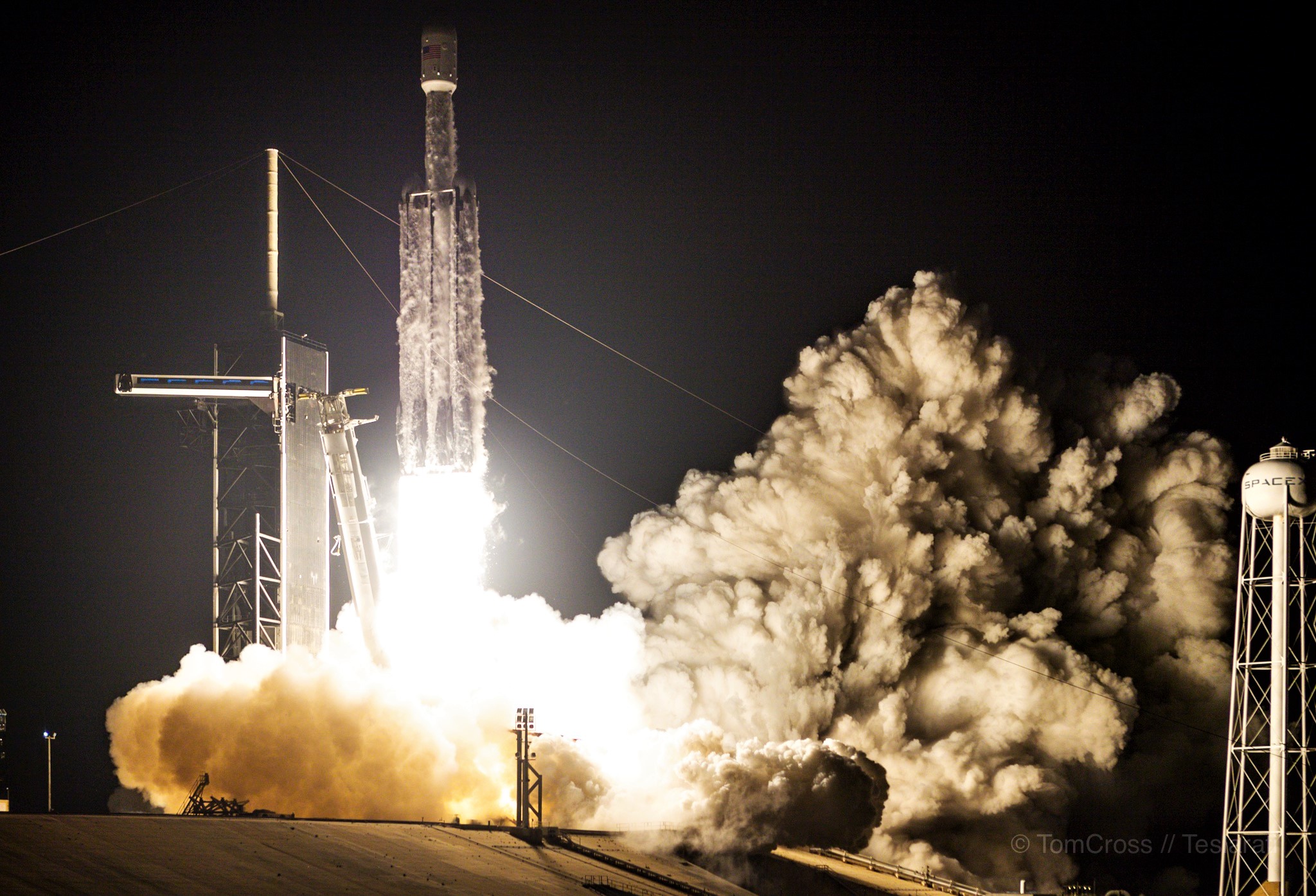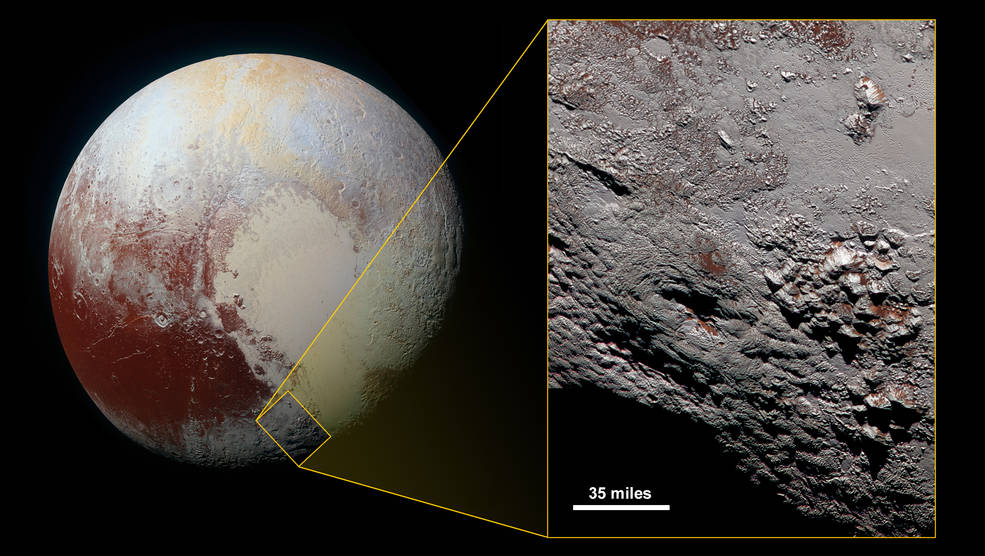

News
SpaceX wins launch contract for NASA mission to study unique metal asteroid
SpaceX has been awarded a $117 million launch contract for NASA’s Psyche mission that will study a unique metal asteroid between Mars and Jupiter.
The NASA mission to loft a 5,750-lb. (2,608-kg) spacecraft atop of SpaceX’s Falcon Heavy Rocket will study a mineral-rich asteroid named 16 Psyche. The mission is expected to take place sometime in 2022 and launch from NASA’s historic Launch Pad 39A in Cape Canaveral, Florida.
Falcon Heavy will launch @NASAPsyche! The mission, for which @NASA requires the highest level of launch vehicle reliability, will study a metal asteroid between Mars and Jupiter to help humanity better understand the formation of our solar system’s planets https://t.co/mvrgx6dvaW pic.twitter.com/FqMaRKscQ4
— SpaceX (@SpaceX) February 28, 2020
Psyche is an intriguing, metallic world orbiting in the asteroid belt, between Mars and Jupiter. Most asteroids are made of rock and ice, but not Psyche — it’s composed of iron and nickel. That’s what makes it an interesting target.
Scientists want to study it because they believe Psyche could provide insight into how planets form. Terrestrial bodies, like the Earth, have metallic cores deep in their interior, below the outer layers like the mantle and crust. Psyche could be one of these metallic cores: the remnant of a violent collision with another planetary body billions of years ago.
We’re unable to study the Earth’s core directly, so Psyche could provide a lot of insight into our own planet as well as how other rocky planets form.
The Psyche mission was selected in 2017 as part of NASA’s Discovery Program, which also includes historic missions like the Kepler Space Telescope, and the InSight Mars lander.
This mission is one of true exploration because scientists aren’t exactly sure of what we will find. Ground-based measurements indicate that Psyche could be as large as Mars, and is probably shaped like a potato. But is this hunk of metal the dead, exposed heart of an ancient protoplanet or could it be a weird iron-rich alien world?
The spacecraft is packing a suite of four instruments that will enable the science team to determine what happened to 16 Psyche over its lifetime. Right now the team postulates that Psyche is the metallic core of a planetary body that was destroyed billions of years ago through an incredibly violent collision with another world. There’s evidence to indicate that Psyche was once molten, and cooled after having its crust stripped away.
Planetary impacts, such as a meteor slamming into the Earth, have been studied for as long as scientists have been studying planets. Understanding these events are a fundamental aspect of planetary science. They can tell us the age of a planetary surface, and much more. Historically, impact studies have focused on rocky worlds, and recently icy bodies. But what happens on a metal world? No one knows.

If Psyche was once a molten world, as the science team believes, it could join the list of volcanic worlds in the solar system. We’re all familiar with the volcanoes that we see here on Earth. Mars had similar ones in its past, like Olympus Mons. But these are not the only types of volcanoes we see in our cosmic backyard. Icy worlds like Pluto and Ceres have evidence of cryovolcanoes.
These are different than what we see on Earth because they spew icy materials instead of lava. Psyche could be even more strange, with evidence of molten metals such as iron and nickel on its surface.
Psyche will test an experimental laser technology that will aim to improve communications with spacecraft over vast distances. It will also launch with two secondary payloads: Escape and Plasma Acceleration and Dynamics Explorers (EscaPADE), which will study Mars’ atmosphere and the process by which it’s being lost to space; and Janus, which will focus on binary asteroids and how they form.
This is SpaceX’s 8th contract from NASA’s Launch Services Program (LSP) and the first for Falcon Heavy. SpaceX’s workhorse, the Falcon 9 has several science missions under its belt, having launched NASA’s Transiting Exoplanet Survey Satellite (TESS), and will launch the upcoming PACE mission, which is designed to study the Earth’s oceans and atmosphere.

News
Tesla FSD fleet is nearing 7 billion total miles, including 2.5 billion city miles
As can be seen on Tesla’s official FSD webpage, vehicles equipped with the system have now navigated over 6.99 billion miles.

Tesla’s Full Self-Driving (Supervised) fleet is closing in on almost 7 billion total miles driven, as per data posted by the company on its official FSD webpage.
These figures hint at the massive scale of data fueling Tesla’s rapid FSD improvements, which have been quite notable as of late.
FSD mileage milestones
As can be seen on Tesla’s official FSD webpage, vehicles equipped with the system have now navigated over 6.99 billion miles. Tesla owner and avid FSD tester Whole Mars Catalog also shared a screenshot indicating that from the nearly 7 billion miles traveled by the FSD fleet, more than 2.5 billion miles were driven inside cities.
City miles are particularly valuable for complex urban scenarios like unprotected turns, pedestrian interactions, and traffic lights. This is also the difference-maker for FSD, as only complex solutions, such as Waymo’s self-driving taxis, operate similarly on inner-city streets. And even then, incidents such as the San Francisco blackouts have proven challenging for sensor-rich vehicles like Waymos.
Tesla’s data edge
Tesla has a number of advantages in the autonomous vehicle sector, one of which is the size of its fleet and the number of vehicles training FSD on real-world roads. Tesla’s nearly 7 billion FSD miles then allow the company to roll out updates that make its vehicles behave like they are being driven by experienced drivers, even if they are operating on their own.
So notable are Tesla’s improvements to FSD that NVIDIA Director of Robotics Jim Fan, after experiencing FSD v14, noted that the system is the first AI that passes what he described as a “Physical Turing Test.”
“Despite knowing exactly how robot learning works, I still find it magical watching the steering wheel turn by itself. First it feels surreal, next it becomes routine. Then, like the smartphone, taking it away actively hurts. This is how humanity gets rewired and glued to god-like technologies,” Fan wrote in a post on X.
News
Tesla starts showing how FSD will change lives in Europe
Local officials tested the system on narrow country roads and were impressed by FSD’s smooth, human-like driving, with some calling the service a game-changer for everyday life in areas that are far from urban centers.

Tesla has launched Europe’s first public shuttle service using Full Self-Driving (Supervised) in the rural Eifelkreis Bitburg-Prüm region of Germany, demonstrating how the technology can restore independence and mobility for people who struggle with limited transport options.
Local officials tested the system on narrow country roads and were impressed by FSD’s smooth, human-like driving, with some calling the service a game-changer for everyday life in areas that are far from urban centers.
Officials see real impact on rural residents
Arzfeld Mayor Johannes Kuhl and District Administrator Andreas Kruppert personally tested the Tesla shuttle service. This allowed them to see just how well FSD navigated winding lanes and rural roads confidently. Kruppert said, “Autonomous driving sounds like science fiction to many, but we simply see here that it works totally well in rural regions too.” Kuhl, for his part, also noted that FSD “feels like a very experienced driver.”
The pilot complements the area’s “Citizen Bus” program, which provides on-demand rides for elderly residents who can no longer drive themselves. Tesla Europe shared a video of a demonstration of the service, highlighting how FSD gives people their freedom back, even in places where public transport is not as prevalent.
What the Ministry for Economic Affairs and Transport says
Rhineland-Palatinate’s Minister Daniela Schmitt supported the project, praising the collaboration that made this “first of its kind in Europe” possible. As per the ministry, the rural rollout for the service shows FSD’s potential beyond major cities, and it delivers tangible benefits like grocery runs, doctor visits, and social connections for isolated residents.
“Reliable and flexible mobility is especially vital in rural areas. With the launch of a shuttle service using self-driving vehicles (FSD supervised) by Tesla in the Eifelkreis Bitburg-Prüm, an innovative pilot project is now getting underway that complements local community bus services. It is the first project of its kind in Europe.
“The result is a real gain for rural mobility: greater accessibility, more flexibility and tangible benefits for everyday life. A strong signal for innovation, cooperation and future-oriented mobility beyond urban centers,” the ministry wrote in a LinkedIn post.
News
Tesla China quietly posts Robotaxi-related job listing
Tesla China is currently seeking a Low Voltage Electrical Engineer to work on circuit board design for the company’s autonomous vehicles.

Tesla has posted a new job listing in Shanghai explicitly tied to its Robotaxi program, fueling speculation that the company is preparing to launch its dedicated autonomous ride-hailing service in China.
As noted in the listing, Tesla China is currently seeking a Low Voltage Electrical Engineer to work on circuit board design for the company’s autonomous vehicles.
Robotaxi-specific role
The listing, which was shared on social media platform X by industry watcher @tslaming, suggested that Tesla China is looking to fill the role urgently. The job listing itself specifically mentions that the person hired for the role will be working on the Low Voltage Hardware team, which would design the circuit boards that would serve as the nervous system of the Robotaxi.
Key tasks for the role, as indicated in the job listing, include collaboration with PCB layout, firmware, mechanical, program management, and validation teams, among other responsibilities. The role is based in Shanghai.
China Robotaxi launch
China represents a massive potential market for robotaxis, with its dense urban centers and supportive policies in select cities. Tesla has limited permission to roll out FSD in the country, though despite this, its vehicles have been hailed as among the best in the market when it comes to autonomous features. So far, at least, it appears that China supports Tesla’s FSD and Robotaxi rollout.
This was hinted at in November, when Tesla brought the Cybercab to the 8th China International Import Expo (CIIE) in Shanghai, marking the first time that the autonomous two-seater was brought to the Asia-Pacific region. The vehicle, despite not having a release date in China, received a significant amount of interest among the event’s attendees.








